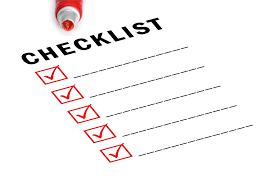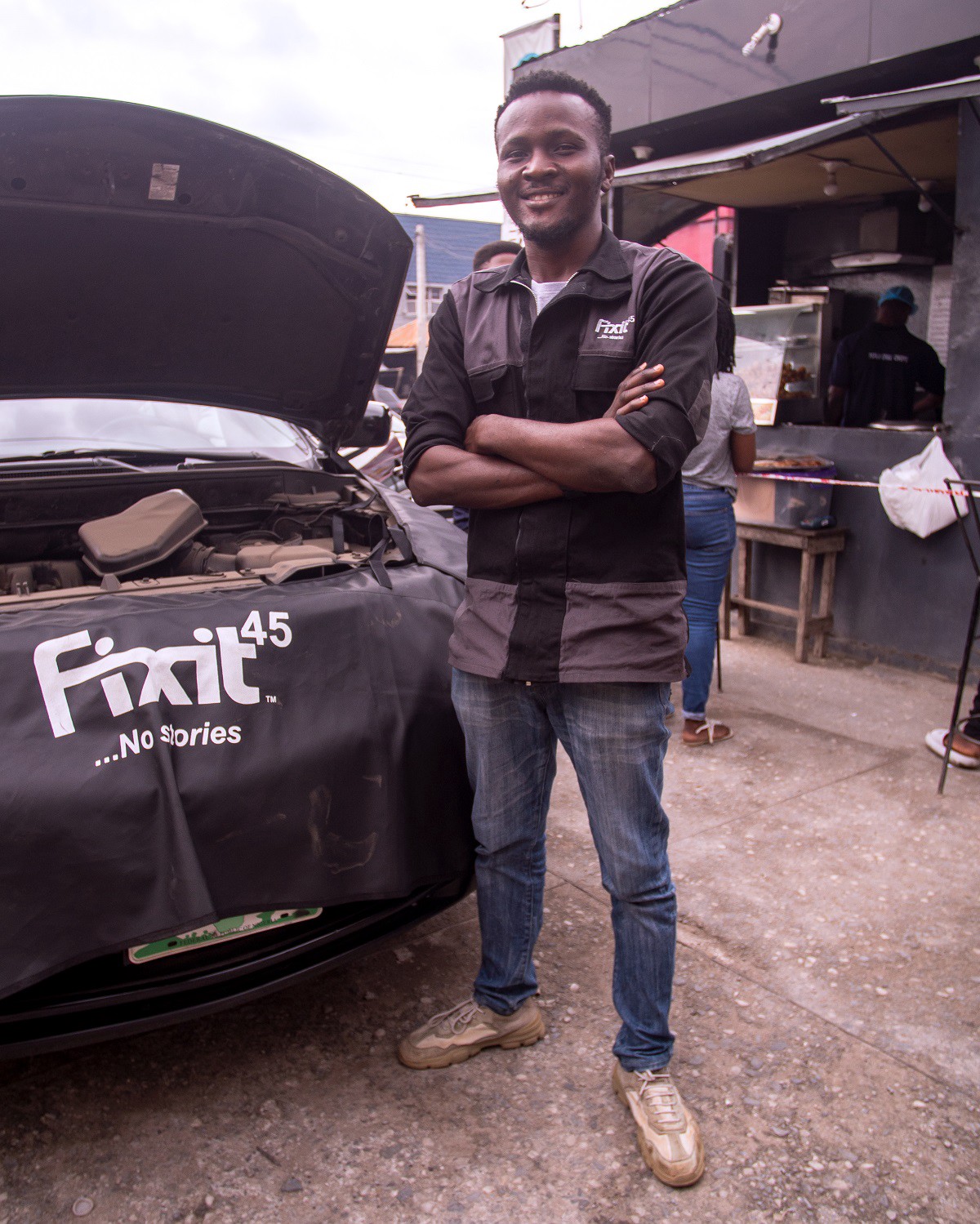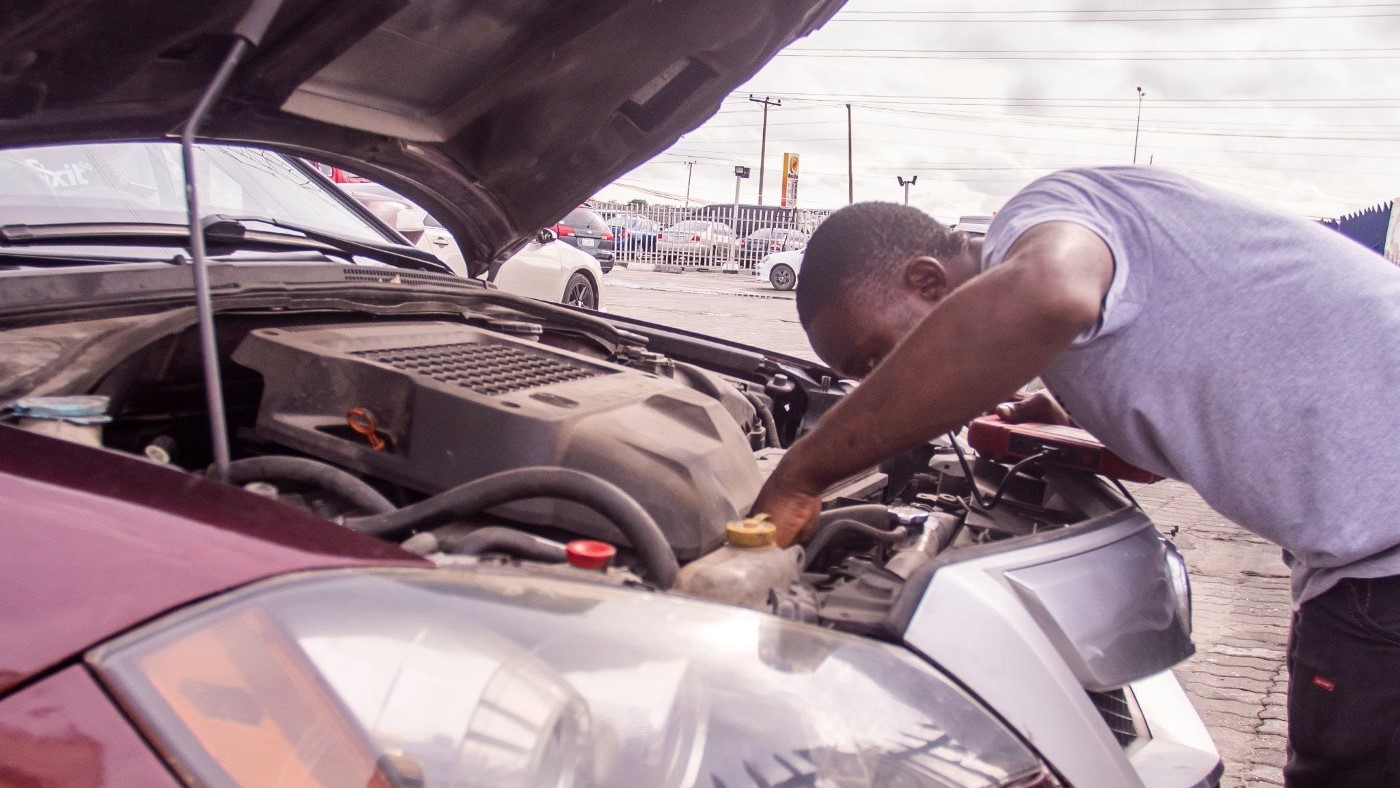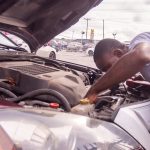I’ll share 10 car maintenance and repair service tips you should consider or look out for. And you need these if you are going to increase the lifetime value of your car or fleet and get it working for you at all times.

This checklist covers the regular, quarterly, and biannual car maintenance procedures.
First, the intro question…
When last did you visit the doctor for a checkup?
Been a minute, I hear you say.
Right.
But that’s a wrong move; if we are keeping it at a buck, periodic health checks are very, very, very important as medical experts have found early detection to be the key to winning any medical battle.
Now, breathe easy.
Take a step back and think about your car – its maintenance and repair.
Car breakdowns on highways, side streets, and bus corners or mechanic garages are common in many throbbing cities across Africa, from Lagos to Nairobi.
Several factors are responsible — bad road networks riddled with potholes, insane traffic jams, heavy downpours with parked cars swimming in them.
But the primary culprit has got to be a poor culture of preventive maintenance and scheduled servicing.
Let’s pretend for a second that in a market like Nigeria, the average car on the road is not at least over 10 years old.
Aha. That complicates the whole matter.
Shall we count the cost of these breakdowns? — interrupted trip/business schedule, unplanned expenses, lost time and manpower, productivity downtime, among so many other things that could go wrong.
The CURE — periodic or scheduled maintenance or repair services on your car. That’s the answer.
Typically, car maintenance activities can be broadly carried out across three phases.
Regular checks – short-term interventions that can span weekly or monthly timelines.
A quarterly check done every three or four months helps reduce the possibility of significant damage.
Biannual checks, which are done less frequently, possibly twice a year, will reduce your vehicle’s depreciation value and petrol consumption while ensuring safety.

An oily affair – change engine oil (Regular maintenance)
Oil is an essential component for the functionality, longevity, and general health of any fleet or car. As such, it is categorized as a regular maintenance activity.
A low oil level can lead to engine problems if left unchecked.
Simply use the dipstick and the electronic gauge to determine the oil level in the car engine.
I recommend changing the engine oil after 2000–3500 miles of travel in passenger vehicles. The “owner’s manual” usually guides the average mileage per oil change.
Is your battery charged? (Regular maintenance)
All electronic accessories in a car depend on the battery to run — the starter, engine, and other current-requiring parts.
Some signs that a battery is weak and should be changed include a misshapen case, bad smell, corroded connectors, and constant electrical issues.
A car battery can last up to four years under perfect temperature and driving conditions. However, it will need to be constantly checked during every maintenance visit.
Let’s brake it down – check your brakes (Regular maintenance)
Hit the brakes! Oh, yeah. It works.
But then, not every time extreme sports.
Checking your brakes can be as basic as looking out for the functionality of the brake lights when the brake is engaged.
Regular brake maintenance is essential for safe and seamless travel. Hence, every brake system component (the pads, master cylinder, calipers, raptors, and line) must be checked during maintenance services.
Tired Tires – worn out tires (Regular maintenance)
How can you Vroom without your tires?
Mission impossible, some might say.
An optimal brake system, a sweet ride, and safety in general rides on the strength of your car tires.
Think about it, the tires are the only part of a car that comes in contact with the hard asphalt on the road and is exposed to a lot of wear and tear.
The tire should be checked often — specifically, the tread depth, air pressure, and wheel balance must be inspected during every maintenance service appointment.
Read (How to make your car tires last longer)
Stir it up fluidly – check the steering fluid (Biannual maintenance)
In popular Naija parlance, we’d say cut your hand right!
But there’s no way to do that without turning the steering wheel.
The power steering fluid is the hydraulic substance used to link the steering and the car’s front wheel. This is essential in the steering wheel system for automatic and manual vehicles.
Although the power steering fluid doesn’t burn off like the engine oil, it could get contaminated by particles and sled around the steering system, making the steering wheel stiff and noisy.
The power steering fluid should be checked during every biannual maintenance and whenever there is reason to believe that the steering system needs some attention.
FiltersRGood – fuel filter (Biannual maintenance)
A fuel filter is designed to screen out rust particles and dirt in the fuel to ensure that every drop that flows into the engine is pure. Ensure that your car’s fuel filter is always in the best working condition, as this is a sure way to keep the engine safe.
It is my recommendation that fuel filters be replaced biannually. However, it should be examined during your routine maintenance schedule.
Just stay cool – the coolant (Quaterly and biannual maintenance)
The coolant is also known as antifreeze. It is positioned in a reservoir close to the radiator, from where it works closely with other components of the liquid cooling system.
A car engine would overheat and seize up if the available coolant is insufficient. Therefore, the coolant checked should be ticked during quarterly and biannual checks.

Keep your belts at optimum performance
The timing and engine belts are parts of the internal combustion engine.
The engine belt, also known as the serpentine belt, connects essential components of the car like the power steering, alternator, and air conditioner to the crankshaft.
On the other hand, the timing belt regulates the rotation of the crankshaft.
Both belts are made of rubber materials with high-tension fiber.
When they become faulty or weak, the car engine would hardly start, constantly misfire and make squealing noises. Therefore, the belts should be inspected anytime these signs are noticed during each oil change and the biannual checks.
Have you met the Sparky one – spark plug (Regular maintenance)
The spark plug maintenance is a regular preventive check that should be carried out based on the manufacturer’s instruction or whenever they start misfiring.
Some car users feel that the spark plug is a primary car component that anyone can easily maintain or replace.
However, it is advised that maintaining it be left to a trained technician.
Car Insurance matters
When last did you check your car insurance policy?
In the same way, you have regular car checkups, it’s a good idea to review your car insurance policy from time to time.
This helps you keep an eye on your policy’s coverage, limits and deductibles, and applicability to your current situation.
Every car deserves the right set of hands, the right set of tools, and spare parts.
And every vehicle owner or fleet manager deserves peace of mind knowing that a breakdown can be anticipated before it happens.
This checklist explores vital components of the vehicle that must be checked and maintained consistently.

Our Solution for car maintenance and repair
Our platform at Fixit45 enables and facilitates car maintenance and repair services that guarantee your peace of mind.
We connect individuals and corporate organizations with a network of genuine and credible workshops that deliver timely, reliable, and convenient car/fleet repair and maintenance services.






